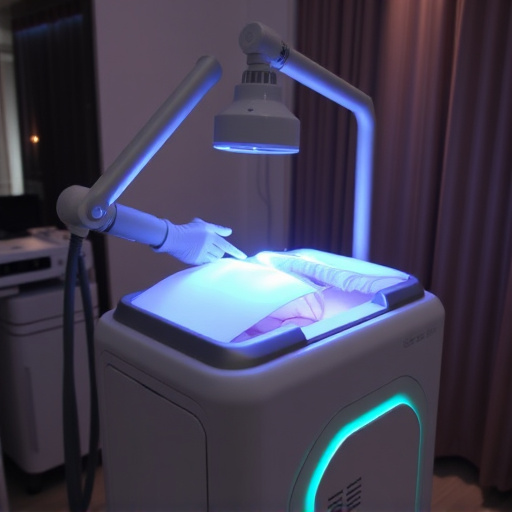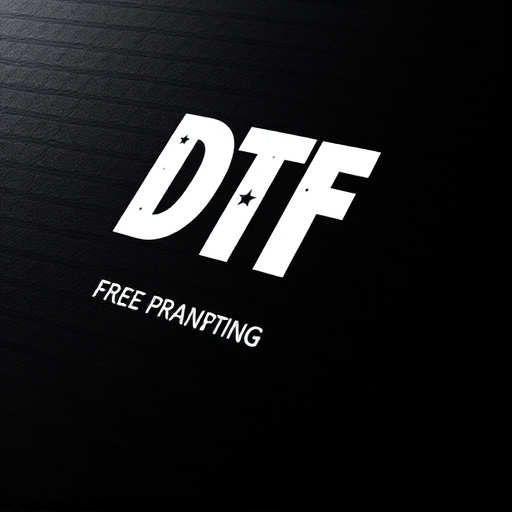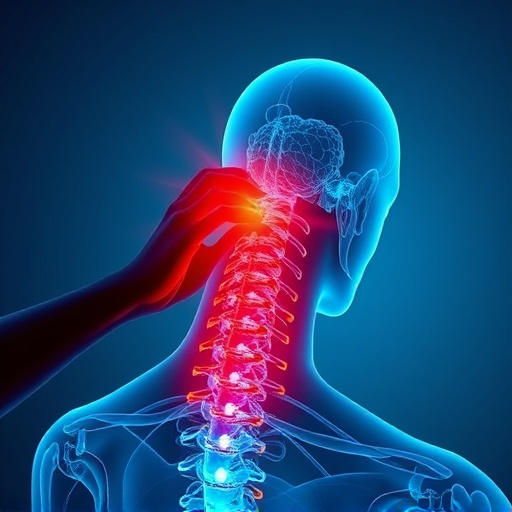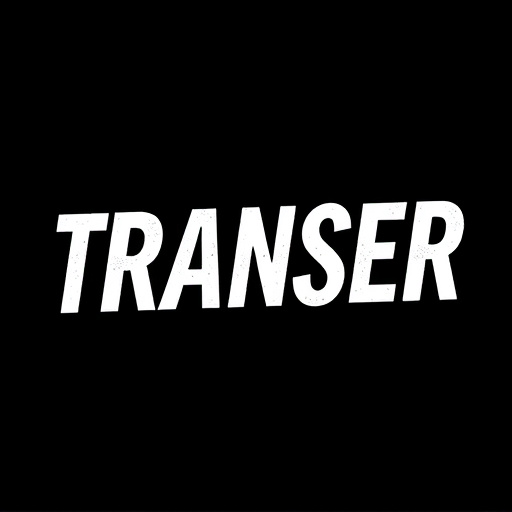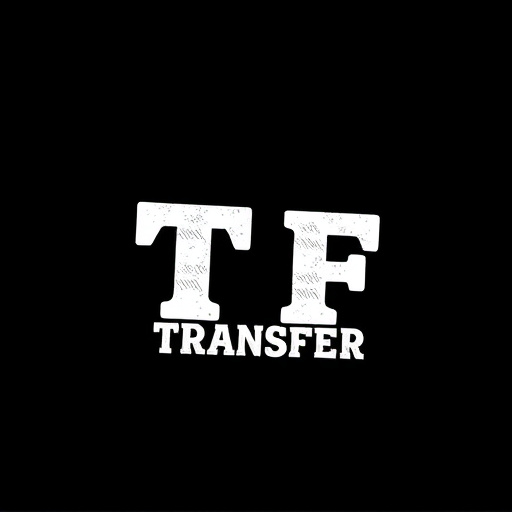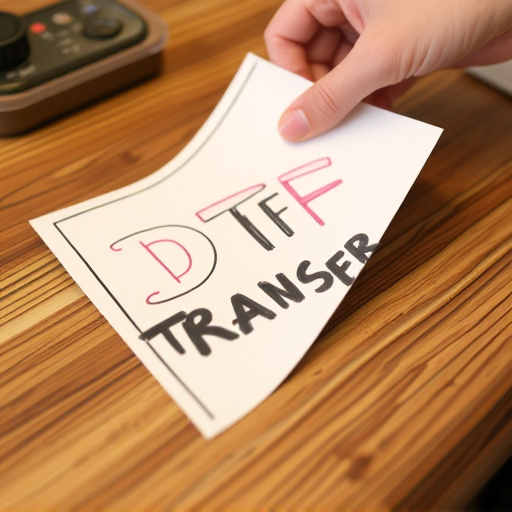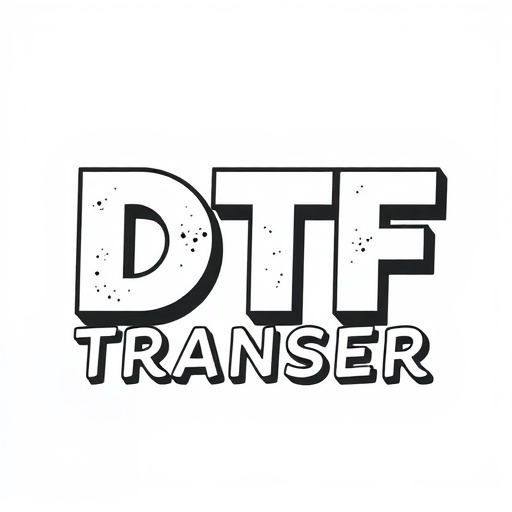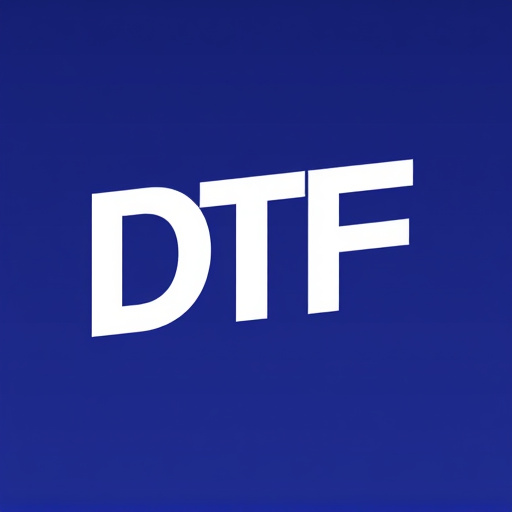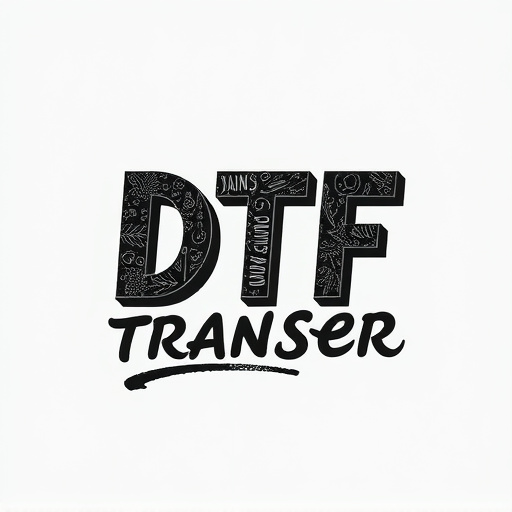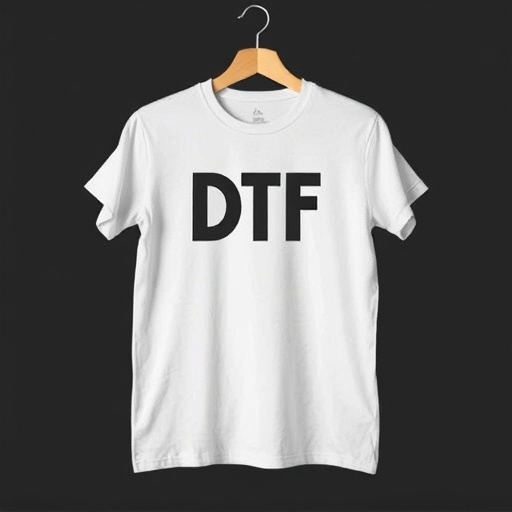DTF (Direct-to-Film) Printing is a versatile, efficient print method that combines multiple designs onto a single film, streamlining production and reducing costs. Popular in fashion, packaging, and signage, it offers speed, precision, and design flexibility for both small and large-scale orders. By minimizing setup time, waste, and inventory needs, DTF Printing revolutionizes printing, providing high-quality results while catering to diverse client needs. Choosing the right films and adhesives is crucial for optimal outcomes, with advancements in digital imaging and precise exposure systems ensuring meticulous registration for intricate patterns. Real-world applications showcase its efficiency across sectors, from apparel manufacturing to personalized food labels, promoting sustainability.
“Revolutionize your printing game with DTF (Direct To Film) Printing—a versatile method that allows for the efficient production of multiple designs on a single film. This innovative technique offers numerous advantages, from reduced waste and lower costs to enhanced design flexibility. By optimizing layouts, selecting suitable materials, and mastering alignment, you can achieve remarkable results. Discover how businesses are successfully implementing multi-design DTF printing, transforming their operations and raising industry standards.”
- Understanding DTF Printing: A Versatile Print Method
- Advantages of Combining Multiple Designs on a Single Film
- Optimizing Layouts for Efficient Printing
- Choosing the Right Materials and Adhesives
- Techniques for Precise Registration and Alignment
- Case Studies: Successful Implementation of Multi-Design DTF Printing
Understanding DTF Printing: A Versatile Print Method
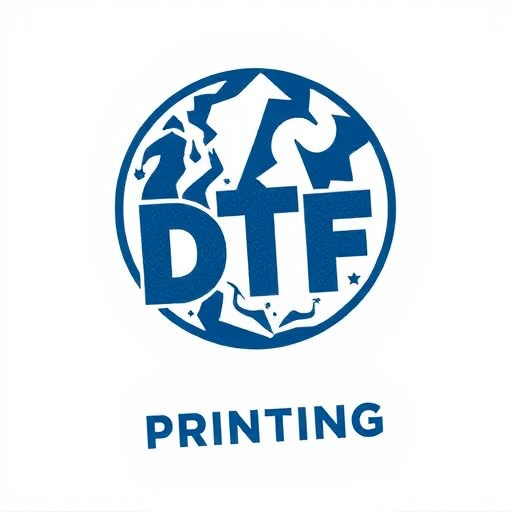
DTF (Direct-to-Film) Printing is a versatile print method that allows for multiple designs to be arranged and printed on a single film, streamlining the printing process and enhancing efficiency. This innovative technique has revolutionized the way we approach custom printing, particularly in high-demand industries like fashion, packaging, and signage. By using specialized software, designers can lay out various graphics, text, and patterns on a single film, ensuring precise registration during printing.
The beauty of DTF lies in its adaptability; it caters to both small and large-scale production runs with equal ease. For smaller batches, it offers the advantage of minimizing setup costs and maximizing design flexibility. In contrast, larger orders benefit from the efficient use of materials, as a single film can produce multiple prints, reducing waste. This method’s popularity continues to grow due to its speed, precision, and cost-effectiveness, making it a go-to choice for businesses seeking efficient printing solutions without compromising on quality or design complexity.
Advantages of Combining Multiple Designs on a Single Film
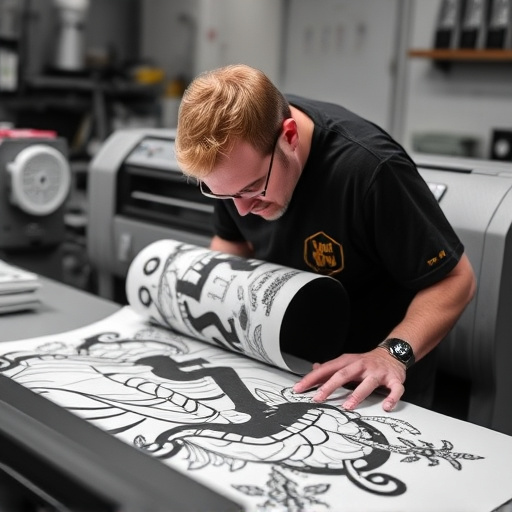
Combining multiple designs onto a single film offers significant advantages in the printing process, especially for businesses and designers adopting Digital Thermal Transfer (DTF) Printing techniques. One of the key benefits is efficiency; by pre-arranging designs on a film, printers can streamline the production process, reducing setup time between prints. This is particularly useful when producing custom or varied products at scale.
Additionally, this method enhances cost-effectiveness. Instead of preparing separate films for each design, having multiple arrangements on one film minimizes material waste and simplifies inventory management. DTF Printing’s versatility is further amplified, allowing printers to cater to diverse client needs from a single source, making it an efficient and economical solution for various printing applications.
Optimizing Layouts for Efficient Printing
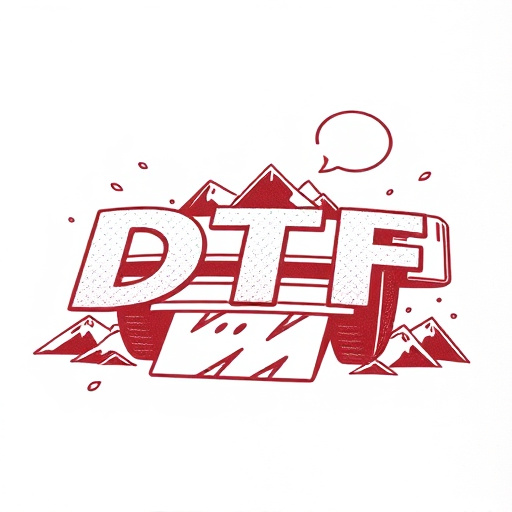
In the realm of modern printing, optimizing layouts for efficient DTF (Direct to Film) printing is a game-changer. By skillfully arranging multiple designs onto a single film, printers can maximize productivity and minimize waste. This innovative technique allows for intricate patterns and diverse designs to be seamlessly integrated onto various print media, offering a vibrant tapestry of possibilities.
The art lies in balancing the complexity of the designs while ensuring smooth transitions between them. With DTF Printing, layouts are meticulously crafted to reduce registration errors, prevent moiré patterns, and maintain consistent quality across the entire print run. This method not only enhances overall efficiency but also ensures that each printed piece stands out, making it a favorite among folks seeking unique, high-quality results.
Choosing the Right Materials and Adhesives
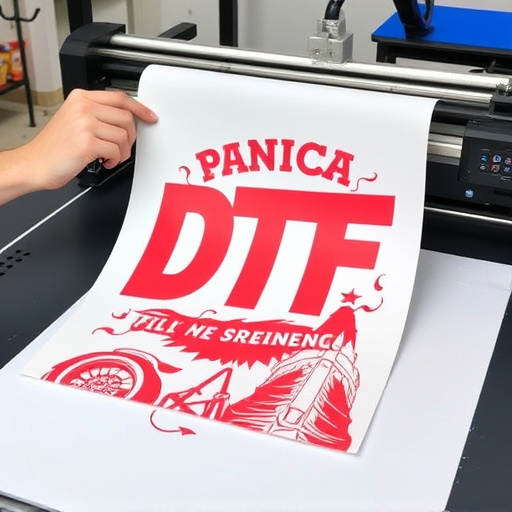
When it comes to efficient printing with multiple designs on a single film for DTF (Direct-to-Film) Printing, selecting the appropriate materials and adhesives is paramount. The choice of film should align with your desired print quality and application. For instance, high-quality transparent films offer superior image clarity, ideal for intricate designs. Conversely, matte or semi-gloss films can be more suitable for outdoor signage due to their better ink adhesion and resistance to fading.
Adhesives play a crucial role in ensuring long-lasting prints. Water-based adhesives are gaining popularity due to their eco-friendliness and ease of use. These adhesives create a strong bond between the film and printing surface, enabling efficient multi-design layouts without compromising quality. Remember, the right combination of film and adhesive will determine the overall success and longevity of your DTF Printing projects.
Techniques for Precise Registration and Alignment
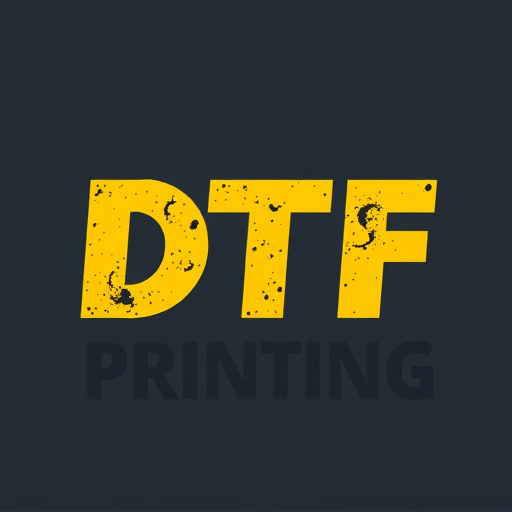
In the realm of DTF (Direct-To-Film) printing, precise registration and alignment are paramount to ensure each design is perfectly positioned on the film for efficient printing. Advanced technologies like digital imaging and precision exposure systems play a crucial role in achieving this level of accuracy. Digital imaging allows for detailed previews and adjustments before the final print, ensuring that every element aligns perfectly along the x and y axes.
Additionally, specialized registration marks and alignment tools help printers fine-tune the positioning of each design on the film. These techniques, combined with high-resolution printing capabilities, enable the creation of intricate patterns and multi-design layouts without any offset or misalignment between elements. This not only enhances the visual appeal but also optimizes material usage, making DTF Printing a game-changer for efficient and precise printing processes.
Case Studies: Successful Implementation of Multi-Design DTF Printing
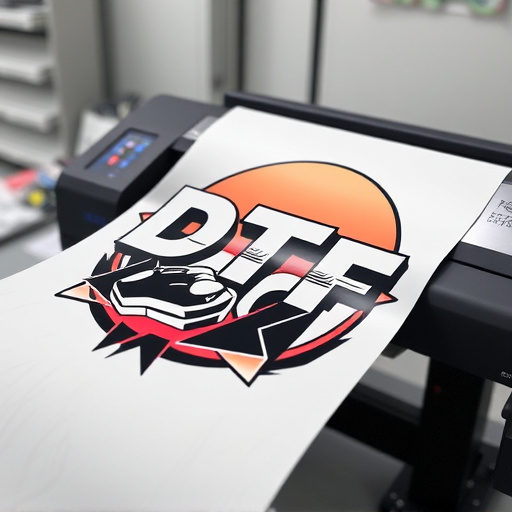
In recent years, the adoption of Digital Transfer Film (DTF) printing has seen significant advancements in the print industry. Case studies from various sectors highlight its successful implementation for efficient and versatile production. For instance, a leading apparel manufacturer utilized multi-design DTF printing to create custom, on-demand clothing. By arranging multiple unique designs on a single film, they achieved rapid turnaround times while maintaining high-quality outcomes. This approach streamlined their production process, eliminating the need for costly set-up costs associated with traditional printing methods for small batches.
Another successful application was observed in the packaging industry, where a food product company embraced DTF printing to produce custom labels. The ability to print multiple designs on one film allowed them to offer personalized packaging options without incurring substantial overhead. This innovative approach not only enhanced their product’s market appeal but also demonstrated a commitment to sustainability by minimizing waste generated from traditional printing plates.
